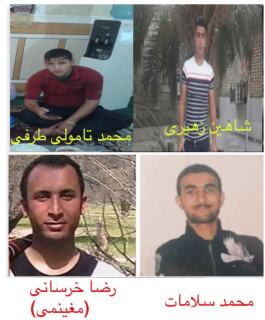Why Ayatollah Death?
Ebrahim Raisi, the late president of the Islamic Republic of Iran, who was called Ayatollah Death by the opposition, died in a helicopter crash on May 19, 2024. This happened after he visited with the president of Azerbaijan. The purpose of that trip was to open a dam on the Aras River, which both Iran and Azerbaijan share.
Raisi got his nickname after participating in the death commission in 1988. After Supreme
Religious Leader Ayatollah Khomeini accepted the ceasefire with Saddam Hussein of Iraq, he ordered that all political prisoners be summoned and required to answer several questions. The Marxist prisoners were asked if they were still Marxists or if they were ready to convert to Islam. Those who were members of the at-the-time still leftwing Muslim People’s Mojahedin Organization of Iran (MKO) were asked if they renounced their leader Masood Rajavi. If the answer to either of these questions was negative, the death commission directed them to the left side, the place of execution.
Ebrahim Raisi was one of the members of that death commission. Following that order, several thousand MKO and Marxist prisoners were executed. A few years ago, the son of the late Ayatollah Montazeri revealed a cassette tape that indicated Raisi, as a member of the commission, in a meeting with him in Qom, insisted on killing even more prisoners after Montazeri stopped the killing. In the same tape Montazeri, who was at the time the designated successor of Khomeini, told Raisi that history will remember you and your colleagues in that commission as criminals. Montazeri lost his position as successor of Khomeini, because of disobeying Khomeini by refusing to approve all the executions. But the young Raisi, who at the time of the 1988 massacre was only 28 years old, spent the rest of his life in key positions in the regime of the Islamic Republic, climbing up the ladder of success. He moved from head of the judiciary to membership in the assembly of experts, which chooses the Supreme Religious Leader. In 2021, when the majority of Iranian people boycotted the election, he became the eighth president of the Islamic Republic.
How and where did the helicopter crash?
Raisi was coming back from a short trip to neighboring Azerbaijan. He met with the president of Azerbaijan, Ilham Aliyev. What strengthened Raisi’s motivation for this trip was Aliyev’s agreement to open the dam, which is supposed to become a symbol of cooperation between the two countries. Emphasizing the importance of joint projects between the Islamic Republic of Iran and the Republic of Azerbaijan, Aliyev considered the construction of this dam as a sign of “friendship between the two countries.” According to the officials of the Islamic Republic, the Qizqalaesi dam, which is referred to as the “largest joint water project” of the two countries, can regulate two billion cubic meters of water per year.
Raisi’s helicopter was supposed to land in Tabriz, the capital of the Iranian Province of East Azerbaijan. Two other helicopters were escorting Raisi’s. Raisi’s helicopter crashed and the other two helicopters landed a short distance from the crash site. At this writing, seven days have passed since the incident, but Islamic Republic officials have not explained to the public why it took more than 16 hours to get to the crash site. The miners have told the reporters that they saw the helicopter and smoke from the fire.
The delay in finding the crash site and the regime’s contradictory explanations have created the ground for all kinds of conspiracy theories, theories like participation of Israel in the plot to sabotage by the enemies within the conservative Principalists faction. There are rival factions within the Principalist faction who are preparing themselves to obtain his position in the case of the death of the aging Supreme Leader Ayatollah Khamenei.
Who is going to be the next president?
According to the constitution of the Islamic Republic, if for any reason the president cannot carry out his duties the vice president takes his position and 51 days after that an election will take place and a new president will take office. Mohammad Mokhber, the vice president, has a dark and criminal record, like Raisi. During the so-called cultural revolution Mokhber, who is from the southern province of Khuzestan, committed many, many crimes against students and political activists. It is impossible to move up in the political system of the Islamic Republic without such a criminal record.
Members of the regime’s Reformist and Moderate factions will not be allowed to run in the elections because of the vetting of candidates by the Guardian Council. Thus, the fight for the presidency will be between different factions of the reactionary Principalists. On the one hand, the candidate may side with the ultra-fundamentalist Paydai front, and on the other hand, he may be linked to older members of the Principalists who have closer ties to Khamenei. The latter include people like Qalibaf, Shamkhani, and Larijani.
Regardless of the competition inside the Principalist camp, the majority of Iranian people will not take part in this election just as they did not in the parliamentary election two months ago. Inflation is sky-high, unemployment is higher than at any time in the 46 years of the Islamic Republic, and pressure against women continues. It does not seem that anybody has any remedy for the diseased body of the economy as long as the overall system is untouched. The only solution for all these crises is to change this system completely and establish a new progressive way of life.
